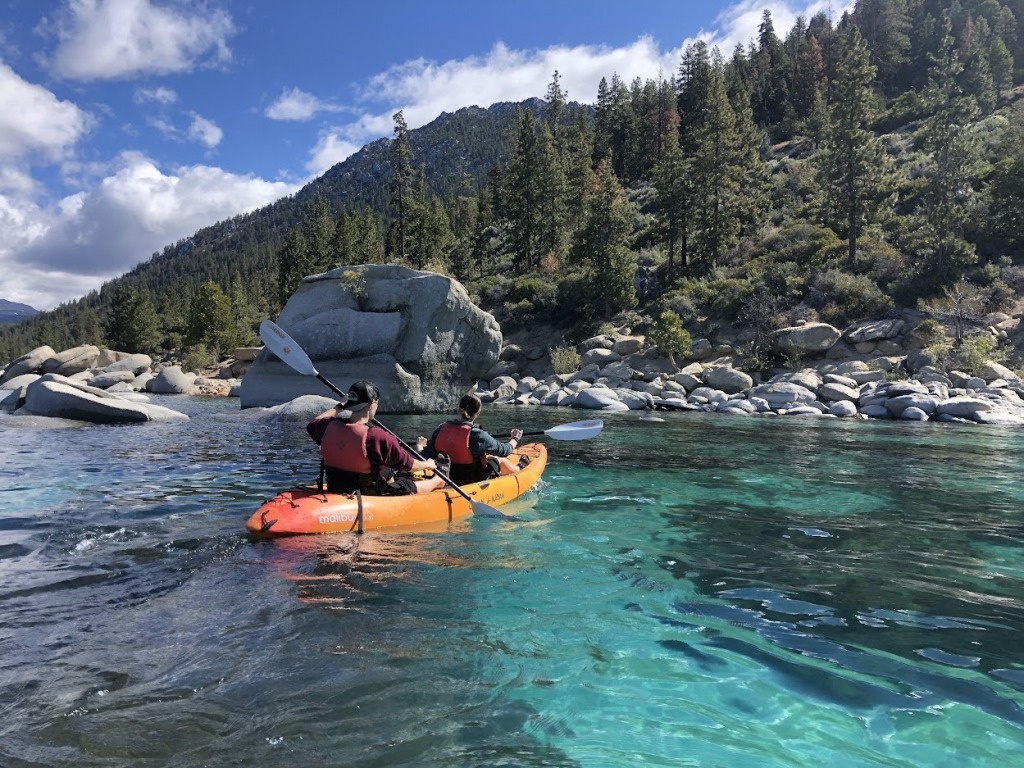
Tahoe Daily Tribune: Report: Pollution from sediment in Lake Tahoe reduced by 600k pounds in 2021
Category:
Report: Pollution from sediment in Lake Tahoe reduced by 600k pounds in 2021
SOUTH LAKE TAHOE, Calif. — Efforts to reduce pollution and restore Lake Tahoe’s world- famous water clarity remain on track, despite impacts from climate change and other factors, according to a bi-state report released Tuesday by the Nevada Division of Environmental Protection and the Lahontan Regional Water Quality Control Board, part of the California Environmental Protection Agency.
Notably, the bi-state Lake Tahoe Total Maximum Daily Load Program’s 10-year Performance Report shows that pollution from fine sediment, which significantly impairs lake clarity, was reduced by nearly 600,000 pounds in 2021, or the mass equivalent of about 206 cars. This is an increase over last year’s reduction of 523,000 pounds.
Nitrogen and phosphorus, both of which contribute to algae growth, have also been reduced by thousands of pounds per year through the program, thanks to efforts of federal, state, and local agencies, as well as private landowners in the basin. The latest lake clarity level was measured at 61 feet.
“Our program’s efforts have become even more critical as Lake Tahoe faces other water clarity challenges from wildfire, smoke, and climate change,” said Mike Plaziak, Lahontan Water Board’s Executive Officer. “Going forward, restoring lake clarity will require us to continue our close coordination and implementation of best practices at every level, from how we maintain roads to how we gather data and adapt our strategies to manage climate impacts.”
Results from the bi-state report found that the partnership between local governments as well as California and Nevada transportation agencies successfully achieved 10-year goals established to reduce urban stormwater pollution and improve lake clarity.
“I’m proud of the progress made over the past decade to restore and enhance Lake Tahoe’s iconic water clarity,” said NDEP Administrator, Greg Lovato in a press release. “Looking ahead, we will continue to collaborate with the Lahontan Water Board, Tahoe Regional Planning Agency, and Lake Tahoe science and implementation partners to advance science-driven strategies and solutions that create a more vibrant, sustainable, climate-resilient Lake Tahoe.”
The Lake Tahoe TMDL Program is a bi-state effort between Nevada and California that was launched in 2011 to restore and enhance Lake Tahoe’s water clarity to historic levels by requiring local governments and highway departments on both sides of the lake to implement measures that help prevent clarity-harming pollutants from reaching the lake. These implementation measures aim to help Lake Tahoe meet the goal of water clarity down to at least 78 feet by the end of 2031. In time, the goal is for people to once again be able to see to depths of 100 feet.
The 2022 Performance Report highlights key accomplishments through 2021, the 10-year anniversary of the TMDL program, and showcases important projects and actions taken by Lake Tahoe partners to significantly reduce clarity-harming pollutants.
Key Findings from the 2022 Performance Report include:
— In 2021, annual clarity measured 61 feet. However, because clarity can vary considerably from year to year based on climate, in-lake processes, and other conditions, the long-term trend is considered a more valuable indictor. Over the last 20 years, lake clarity has remained relatively stable, and is no longer declining.
— Researchers found that fine particles and algal chlorophyll are the primary variables affecting Lake Tahoe’s clarity. Recent years have presented evolving and new threats to Lake Tahoe as climate change, increasing temperatures, floods, drought, and wildfires impact the lake in ways that are not fully understood.
— Wildfire continues to be a primary threat to restoring water clarity. The report takes a special look at restoration work completed for the Angora Fire, similar to what is anticipated to be accomplished for the Caldor Fire, to minimize water quality impacts, as well as studies launched to determine water quality impacts from smoke, ash and wildfire and the effectiveness of forest health and fuels reduction projects to minimize such impacts.
— Analyses show that efforts to reduce pollutants entering the lake through forestland runoff, erosion of stream beds and banks, and air deposition are on track to achieve 10-year goals. To learn more about the TMDL Program and accomplishments to improve Lake Tahoe’s water clarity, view the Lake Clarity Tracker.
To learn more about the TMDL program and accomplishments to improve Lake Tahoe’s water clarity, view the Lake Clarity Tracker.
Source: Nevada Department of Conservation and Natural Resources
Share this:






